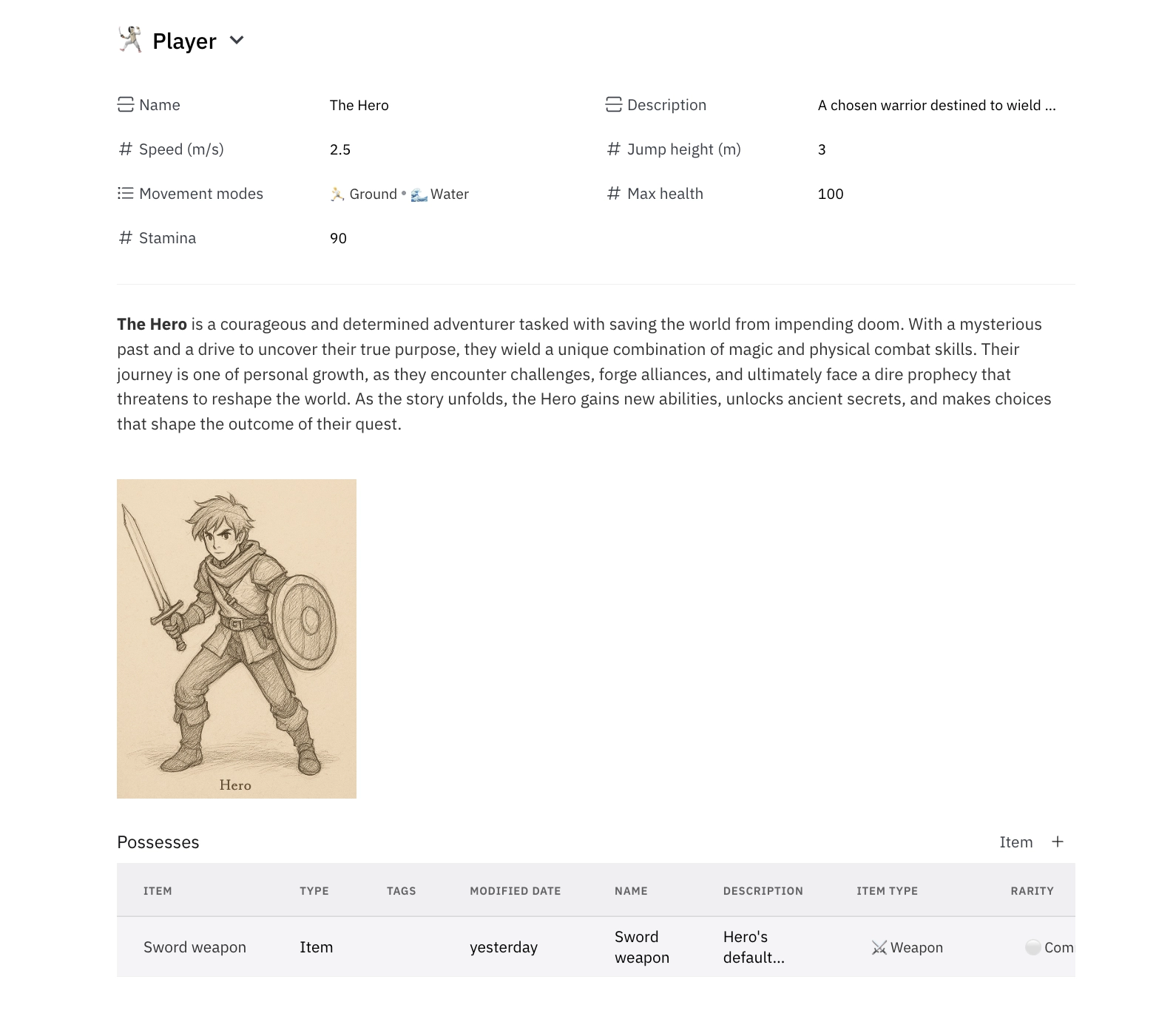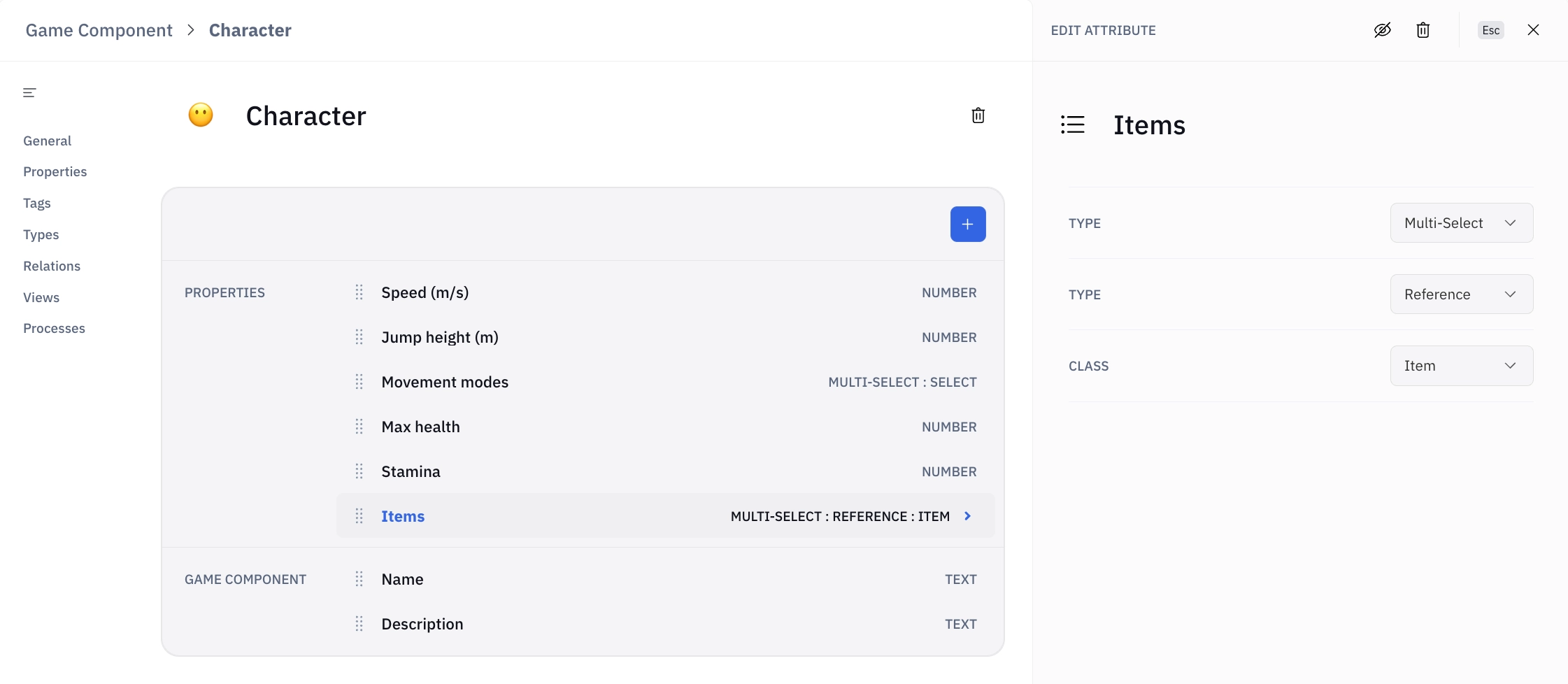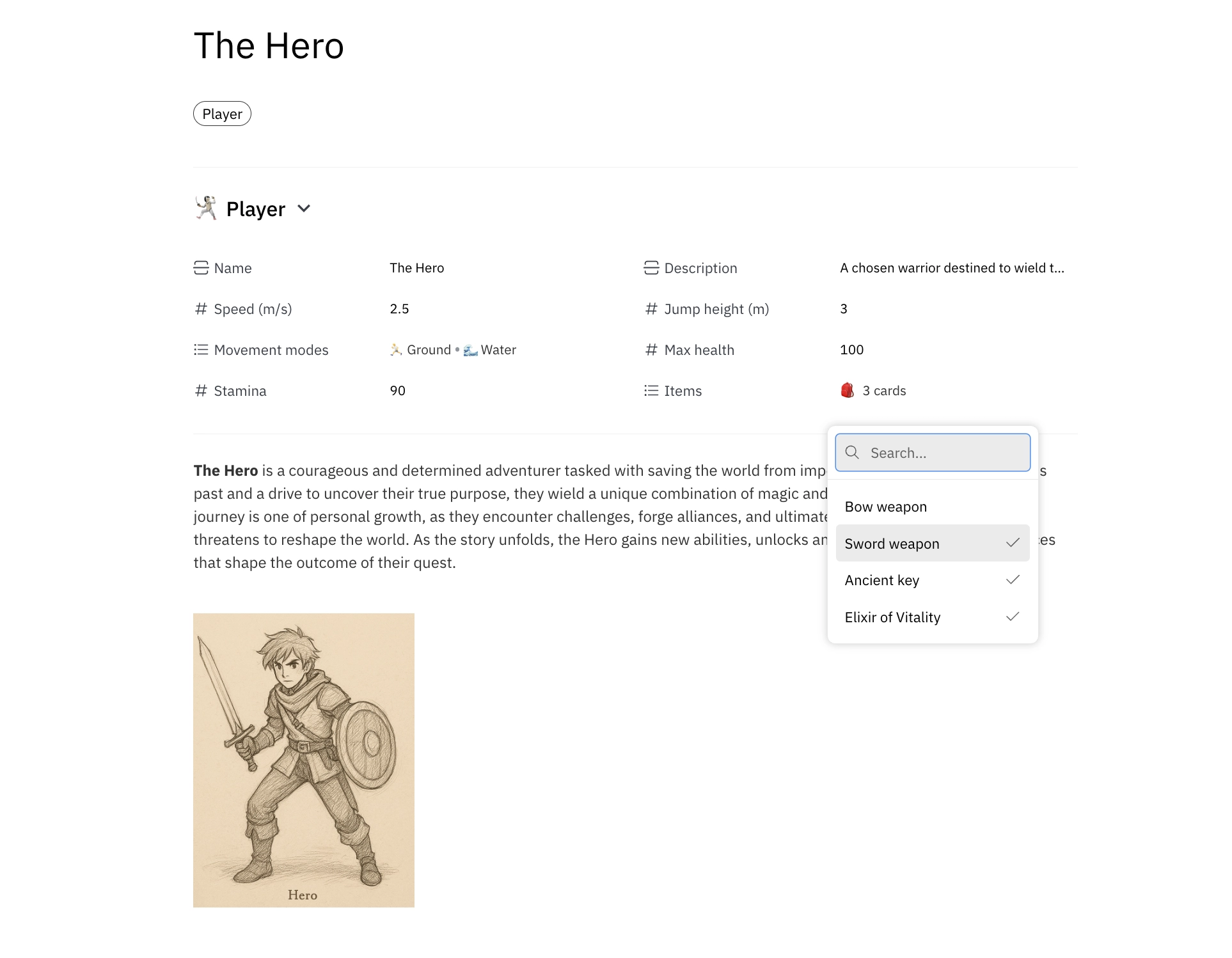Relations vs. References
In some cases, you may want to connect Cards together using References instead of Relations.
Relations are bi-directional, meaning that a Relation will appear on both Cards involved the relationship. In our example of a Character possessing an Item, the Relation will appear on both the Character and the Item Card.
Below: The
Itemis shown on theCharacterCard

Below: The
Characteris shown on theItemCard

References, on the other hand, are one-directional. A Reference will only appear on the Referring Card, and a Reference is a type of attribute. Instead of using a Relation to define the association between Character and Item, you can add a Reference attribute to the Character Type that references the Item Type. This can be a single-select or multi-select attribute, depending on your use case. In this case, the Item Card will not show which Character possesses it.
Below: Add a reference attribute to the
CharacterType in Settings

Below: Select
ItemCards on theCharacterCard using the Reference attribute

Deciding whether to use a Relation or Reference
The decision to use a Relation or Reference depends on your use case and how you’d like to design your own system. Here are a few things to consider with regard to functionality and presentation of your data.
Note: We will diverge here from our game design example to illustrate the difference between Relations and References using a more general example of
PersonandMeeting. Soon, Persons in Huly will be replaced with Cards, allowing you to manage your contacts in a more robust and customized database system. The examples in this section demonstrate the differences between Relations and References on a large scale, considering a case of a team managing thousands of contacts and meetings.
Visibility and navigation
Relations are visible on both Cards, making it easy to navigate between related entities. This bi-directional visibility is useful when you want to maintain a clear and reciprocal connection between two entities. For example, if you have a Person that is related to a Meeting, both the Person Card and the Meeting Card will show this relationship, allowing easy navigation in both directions.
Scalability
As your system grows, consider how each option will scale.
For example, let’s say you want to create Cards for meeting minutes. You may want to create a Relation:
MeetingN:NPerson- Attended (
Meeting) - Attendees (Person) - Meaning: A Meeting has attendees; a Person attended Meetings.
- Attended (
This may seem convenient at first — you can see all of the attendees in the Relations section of each Meeting Card, and you can see which meetings everyone attended on the Person Cards.
However, as the number of meetings grows, each Person may end up with an overwhelming number of meetings on their Card, making it difficult to navigate. In this case, a better solution might be to use a Reference attribute on the Meeting Type; for example:
Meeting Minutes(Type)- Date
- Topic
- Attendees (Reference to
Person)
In this case, you can add many Person Cards to the Meeting Card without cluttering the Person Cards themselves.
Sorting and filtering
References are a type of attribute, so you can sort and filter your Cards based on the Reference value. If you might want to sort or filter your Cards by a specific attribute, consider using a Reference instead of a Relation. In our example of Person and Meeting, if Person is a Reference attribute on the Meeting Type, you can easily create filtered views for meetings attended by different groups of people.
Designing your own knowledge system
Ultimately, how you design your system is up to you! There are advantages and disadvanteges to every kind of setup, and there’s no “correct” way other than the way that works best for you.